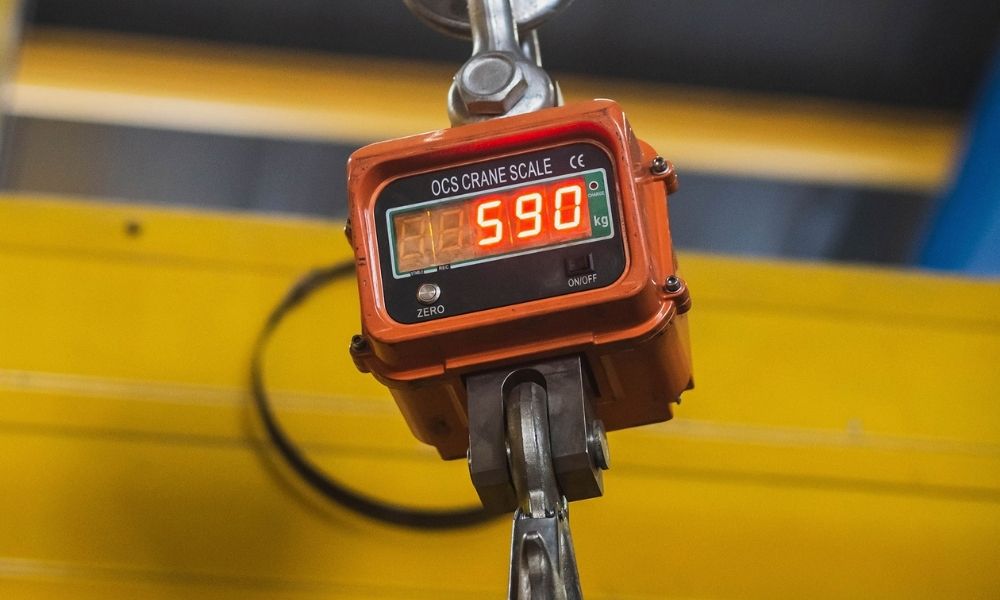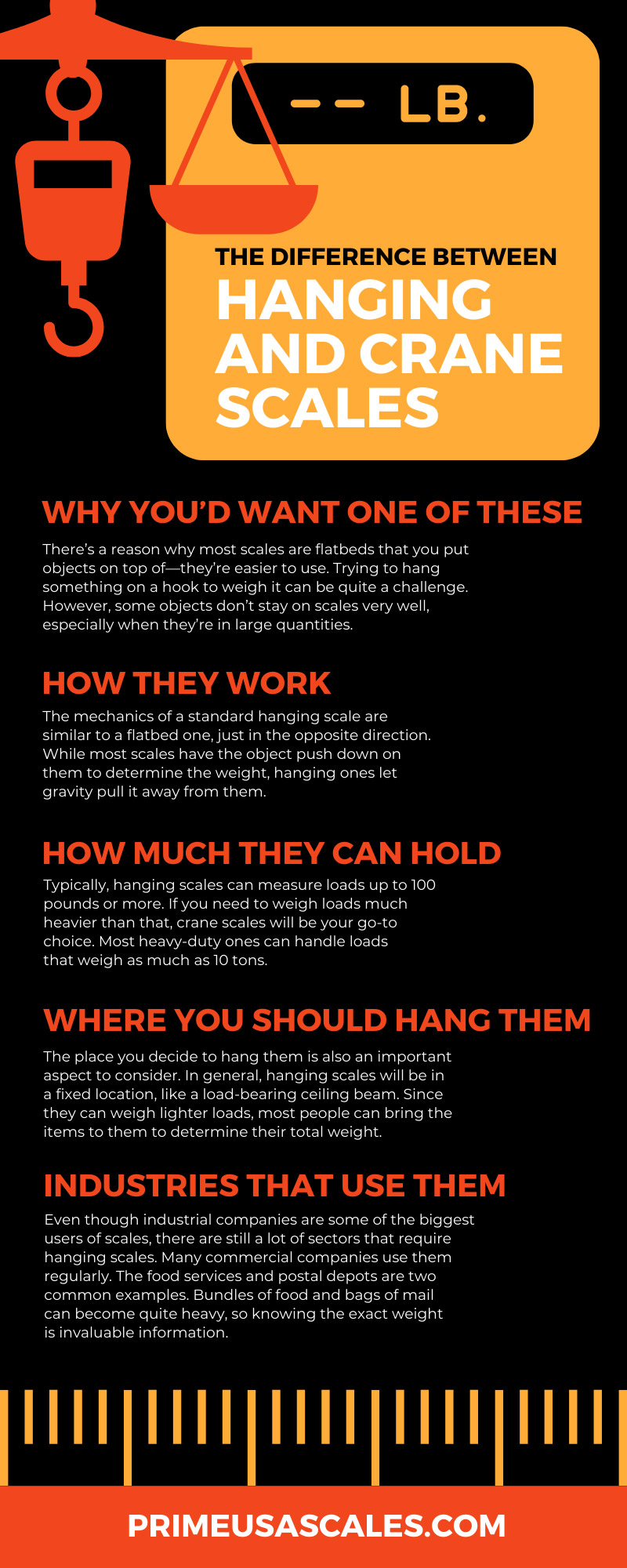
When you work in an industry that deals with heavy objects on a consistent basis, it’s vital to know what kind of weights you’re dealing with. Whether that info will save someone from breaking their back when trying to lift something that’s too heavy or stop someone from overloading an industrial vehicle, knowing exact weights can be invaluable.
However, depending on what you’re weighing, some scales might be better choices than others. While most allow you to set objects on top of them, a few let you hang them underneath to find the weight. These types are known as either crane or hanging scales.
Even though they are quite similar, you can make some important distinctions between them. That’s why we’ve put together a guide that goes over the difference between hanging and crane scales. If you are interested in getting one or the other, you’ll want to know what separates them.
Why You’d Want One of These
There’s a reason why most scales are flatbeds that you put objects on top of—they’re easier to use. Trying to hang something on a hook to weigh it can be quite a challenge. However, some objects don’t stay on scales very well, especially when they’re in large quantities. For example, a bunch of rounded fruit would keep rolling off of a standard scale, but if you put it all in a bag together, you could easily hang it from a hook to determine their combined weight.
Another reason why a flat scale wouldn’t work is if the object in question doesn’t want to stay on it. Not that many heavy loads have sentience, but if you’re a farmer who needs to know your livestock’s weight, these scales can be a lifesaver. Special harnesses exist specifically to lift up an animal safely and get an accurate measurement while they can’t move around.
How They Work
The mechanics of a standard hanging scale are similar to a flatbed one, just in the opposite direction. While most scales have the object push down on them to determine the weight, hanging ones let gravity pull it away from them.
Even though this method is just as accurate, the one thing you’ll need to keep in mind is that you’ll need to subtract the weight of whatever holds the object up. Not many things can hang from a hook naturally, so most of the time, you’ll need a bag, basket, harness, or set of cables to hold the items up. In some cases, the weight of these holding devices won’t be enough to affect the overall weight, but if you want the most accurate number possible, you’ll need to calculate it separately and subtract it from the grand total.
How Much They Can Hold
Now that we’ve covered the purpose and utility of them, it’s time to go over the difference between hanging and crane scales. The key factor that separates them is how much weight they can hold. Typically, hanging scales can measure loads up to 100 pounds or more. If you need to weigh loads much heavier than that, crane scales will be your go-to choice. Most heavy-duty ones can handle loads that weigh as much as 10 tons. Some specialty ones can surpass even that number, though.
Where You Should Hang Them
The place you decide to hang them is also an important aspect to consider. In general, hanging scales will be in a fixed location, like a load-bearing ceiling beam. Since they can weigh lighter loads, most people can bring the items to them to determine their total weight.
Crane scales are best used on cranes, as the name implies. The main reason for this is that the object you’ll need to weigh will be way too heavy for you to move, so you’ll need to bring the scale to it. As a bonus, you can kill two birds with one stone since the crane will allow you to move the load while weighing it. Just keep in mind that you’ll want to be sure to move it slowly since faster speeds could lead to an inaccurate measurement.
Despite all of this, you could theoretically use a hanging scale on a crane and hook up a crane scale from the ceiling. One problem you’ll need to be aware of for the hanging scales is not overloading them with very heavy items that the crane will have to move. On the other side of things, if you weigh a massive object on a crane scale that’s attached to a weak ceiling, the whole thing could collapse. That’s why it’s best to use these scales in their desired locations.
Industries That Use Them
It should go without saying that most people tend to use crane scales in the industrial sector. This is where people need to move extremely heavy loads around daily. Most of the time, companies buy these scales to attach to their mobile or stationary cranes.
Even though industrial companies are some of the biggest users of scales, there are still a lot of sectors that require hanging scales. Many commercial companies use them regularly. The food services and postal depots are two common examples. Bundles of food and bags of mail can become quite heavy, so knowing the exact weight is invaluable information. Another one that we talked about earlier is the farming industry. While some larger animals might need a crane scale, most of them are light enough not to overload a standard hanging scale.
Which Type You Should Get
Now that we’ve gone over all of the details with you, there shouldn’t be any further confusion about what hanging and crane scales are and how they are different. In fact, it should be easy to determine which type will work best for your company. Fortunately for you, whether you decide to get a lighter-weight hanging scale or an industrial crane scale, we’ve got you covered here at Prime USA Scales. We have a vast selection of both types, so be sure to take the time to find the one that is the perfect fit for your company’s needs.
